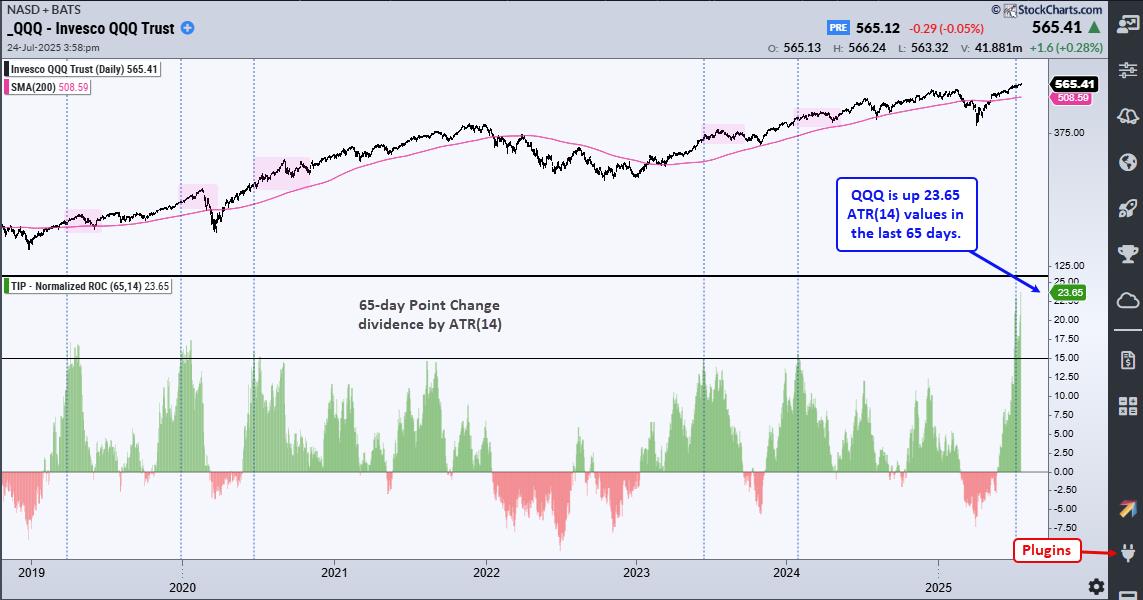Defense Stocks To Buy: A Strategy You Need to Know and Use

Aerospace and defense stocks seem to be busting through turbulence. Lockheed Martin (LMT)'s better-than-expected earnings helped push its stock price higher, and the positive news added upside momentum to the aerospace and defense industry. So it shouldn't be surprising that the Industrial sector, using the Industrial Select Sector SPDR fund (XLI) as a proxy, was the leading sector on Tuesday, with Materials a close second.
Defense and aerospace make up a huge chunk of the Industrial sector. And, on Tuesday, both were the top-performing industries in the Industrials sector.
If you look at these industries separately, Lockheed Martin and Northrop Grumman (NOC) are two of the leading stocks. In aerospace, Boeing (BA) and Raytheon (RTX) are two of the larger players.
Despite the industry's headwinds—supply chain issues, Boeing's halting of MAX deliveries, analyst downgrades, and labor market shifts that have hurt large manufacturing industries—all four stocks moved higher.
Zeroing in on the Industry
Although the industry is still struggling, increased defense spending and rising space sales helped push the industry higher. To see how aerospace and defense stocks are performing, you could pull up a chart of the iShares US Aerospace & Defense ETF (ITA). ITA has outperformed the S&P 500 index ($SPX) since mid-March, trading volume is increasing, and the ETF is looking to break above its 52-week high (see chart below). Will it break through this level or pullback?
CHART 1: AEROSPACE & DEFENSE STOCKS ARE MOVING HIGHER. Will the trend continue or will there be a pullback? So far, it looks like more upward movement is likely, but that could change.Chart source: StockCharts.com. For illustrative purposes only.
Given the positive movement, it may be tempting to jump into aerospace and defense stocks. But before you do, it helps to do a deeper analysis to help confirm your trading plans and to make smarter trading decisions.
There's no right way to analyze a stock, but one effective method many successful traders apply stems from Jesse Livermore's trading strategy. It's a four-step process that's pretty much a top-down approach.
The Nuts and Bolts of the Strategy
Here's how you could analyze the industry and decide which defense stock you want to buy:
The Market. Check out the current market direction to ensure it aligns with the direction of the stocks you're considering. A great way to do this is to head to Your Dashboard on the StockCharts platform. If you look at the broad indexes—Dow Jones Industrial Average ($INDU), S&P 500 index ($SPX), Nasdaq Composite ($COMPQ)—they're approaching a critical level. A breakout above that level could be a positive sign. The Industry Group. Looking at the performance of ITA, it's looking similar to that of the broader indexes—approaching a critical level, in this case, its 52-week high. Overall the industry group seems to be trending upward, except for some significant pullbacks. If you look at the past couple of pullbacks, they generally follow a pattern of higher highs and higher lows. Comparative Analysis. Compare different stocks within the industry group. For example, if you're seriously considering investing in Lockheed Martin, you could compare its performance against Northrop Grumman. Individual Stock Analysis. Still think Lockheed would be a good investment? Look at the overall market, the industry group, similar stocks (in this case, Northrop Grumman), and a chart of Lockheed stock.CHART 2: TOP-DOWN TRADING STRATEGY. If the overall market, the industry, and stocks within the industry are all in trend direction agreement, your trading decisions are likely to have a higher probability of success.Chart source: StockChartsACP. For illustrative purposes only.
Looking at the four charts on one screen helps to see confirming and conflicting signals. In the above chart, you see the following:
Starting with the broader market, it looks as if there's a bit of a pullback. The aerospace and defense industry is also showing a similar scenario. Looking at Lockheed's stock, since the gap up in price, the stock has pulled back. It could go low enough to fill the gap. If a reversal occurs after the pullback, the uptrend resumes, and it's in sync with the overall market and industry, it could be time to consider entering a position. Northrop Grumman's stock also looks to be taking a breather. If the uptrend in Lockheed resumes and Northrop also trends upward, it could be a positive sign for the aerospace and defense industry.For additional confirmation, you could throw in a few trend-following indicators, such as moving averages and moving average convergence divergence (MACD), into your analysis.
The Final Word
Investing in the aerospace and defense sector can be a macro play since it's linked with the global economy. Investors should keep an ear open for developments in the debt ceiling this summer. Any cuts in defense spending could hurt defense industry stocks. But if you keep an eye on the overall market, industry, and a couple of stocks, you could see reversal signals ahead of time. This could help you decide when to exit your position.
If you regularly look at the Sector Summary in Your Dashboard, you'd have noticed that industry groups often go in and out of favor. Instead of fighting with the market, let the market tell you what to invest in.
Disclaimer: This blog is for educational purposes only and should not be construed as financial advice. The ideas and strategies should never be used without first assessing your own personal and financial situation, or without consulting a financial professional.




